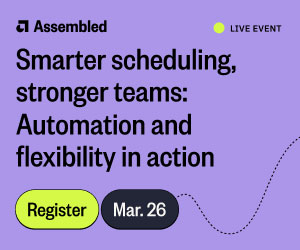Contact Centres in the Hybrid Era
In the last year, we’ve conducted two pieces of research to better understand the sentiments of knowledge workers and their work location preferences. The conclusions are clear – hybrid working is the preferred choice for employees and is the direction in which most organizations are headed.
Not only does the majority of the workforce have a preference towards a hybrid working model, but giving employees the freedom to choose where they work from improves motivation, trust, mental well-being, and overall productivity.
Contact centre advisors also prefer more flexible work. However, the transition to remote work for advisors has had many challenges, not least for an industry traditionally heavily reliant on peer comparisons and supervisor monitoring.
According to recent Qualtrics research, 55% of advisors report being granted remote work flexibility, compared to 76% reported by contact centre managers. Today, data estimates indicate roughly only half of agents are mostly or full time back in the office.
The Evolving Complexity of the Supervisor Role
This seismic change in where work is done is having an impact on the day-to-day operations of contact centres. In the industry, supervisors have long played a crucial role in driving the customer experience (CX).
In addition to onboarding and training advisors, they regularly support them with encouragement, feedback, and real-time assistance.
In on-premise setups, a big part of their job is walking the aisle. Historically, this physical presence has been an essential part of figuring out which advisors need additional support or more tailored training.
Similarly, it gives them the ability to give praise and credit to advisors when they’ve successfully resolved a complex customer issue or handled a tense situation with professionalism and understanding.
With the rise of the hybrid and remote contact centres, however, advisors can’t always physically walk the aisle.
Most can only see basic call stats from a contact centre platform and do check-ins via Teams, Slack or Zoom. And though this can be a challenging substitute for being physically together, it’s a challenge contact centre leaders will need to face head-on, as hybrid is the way of the future.
When it comes to supervisor assistance, a big benefit of being in person has always been a supervisor’s ability to hear how their agents are doing.
Tone of voice is a powerful conveyor of sentiment and feeling, and traditionally, supervisors can gauge their agents’ wellbeing or detect things like stress, fatigue or disengagement.
With remote or hybrid work, this has been a major challenge, but is now something that can be addressed with software for supervisors to remain close to their teams.
Leveraging AI to Support Supervisors in Real Time
In hybrid and remote work, wouldn’t it be great if supervisors could get the same real-time overview of call performance, so they can spend precious time with the advisors fielding the most difficult calls?
Luckily, new CX analytics tools – powered by advanced artificial intelligence for sentiment analysis – bring advisors and their supervisors closer together than ever before.
With real-time analytics, the supervisors can get an instant read on how their advisors are performing, who needs support, and who needs praise.
Similarly, advisors can get real-time praise and coaching suggestions directly from the analytics solution, helping to boost both performance and engagement.
For instance, network analytics and intelligent headsets provide real-time updates on audio quality to help ensure that the customer can hear the advisors, no matter where they’re taking the calls from.
This is made possible with solutions such as the ones delivered by Nectar and Jabra (+Operata and Jabra, Virsae and Jabra).
And even closer to the core of delivering the best CX, supervisors and advisors can get real-time input on customer sentiment – understanding not just what customers are saying but how they’re saying it.
Succeeding in the Hybrid Contact Centre
The future of the contact centre is hybrid, and this means that advisors and supervisors will not always be situated in the same building together.
In order to connect them across these various working locations – home, the office, or anywhere else – contact centre leaders must begin looking towards new technologies that shrink distances and enable real-time data, feedback, and intervention. In the hybrid future, AI-enabled contact centres will have the edge.
Author: Guest Author
Published On: 3rd Oct 2022 - Last modified: 4th Oct 2022
Read more about - Guest Blogs, Jabra




































